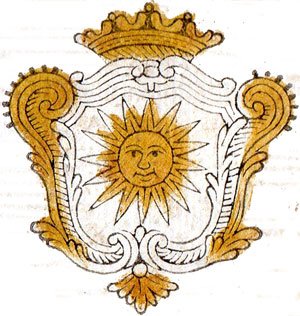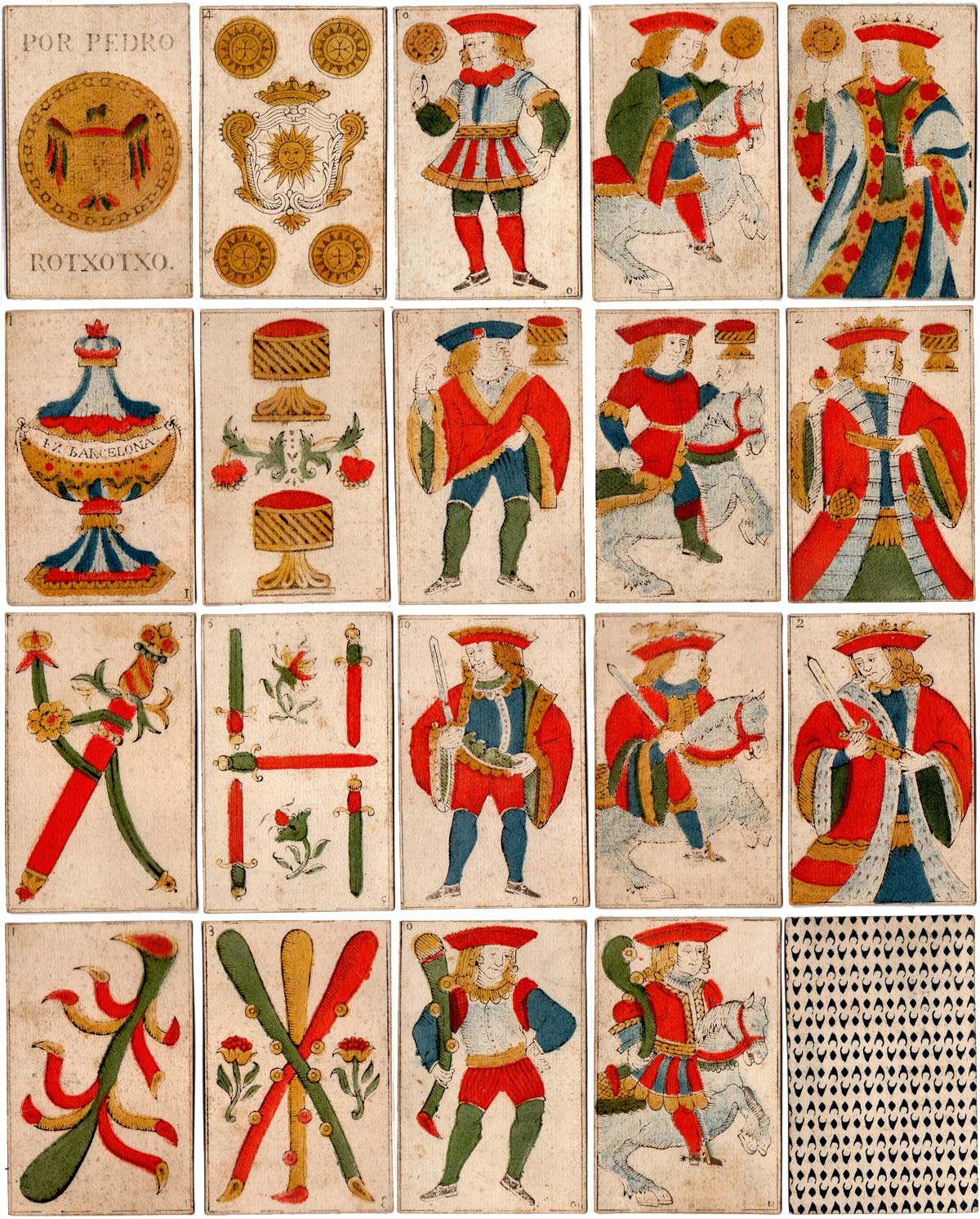Latest Article
Array
(
[namespace] =>
[element] => pdoResources
[elementClass] => modSnippet
[cacheKey] => wopc/footer/
[cacheHandler] =>
[cacheExpires] => 86400
[cacheElementKey] => latest
[return] => chunks
[id] => 13752
[type] => document
[contentType] => text/html
[pagetitle] => Happy Families
[longtitle] =>
[description] =>
[alias] => happy-families
[alias_visible] => 1
[link_attributes] =>
[published] => 1
[pub_date] => 0
[unpub_date] => 0
[parent] => 11643
[isfolder] => 0
[introtext] => A cautionary tale...
[content] => <p class="lead"><span class="dropcap" title="I-11">I</span> recently purchased two packs of Happy Families cards having first had a quick perusal of wopc articles to check whether these packs were already known and recorded. At first glance they appeared to be new additions to the site. How wrong can you be?!</p>
<p>Had I done my homework more thoroughly, I would have first turned to the article originally published in 2010 which describes the origin of Happy Families games as probably inspired by the American game “Dr. Busby” from around 1840. Soon thereafter John Jaques Jr. produced the first version of the game which was to become one of the most popular and long-lasting games ever devised:</p>
<p class="text-blue-550 fst-italic ms-5 me-6">“The production of Jaques' Original Happy Families in the mid-nineteenth century, with cartoons designed by John Tenniel (later Sir John, chief cartoonist of Punch), led to the appearance of numerous other 'family'-type games. It is interesting to see the great variety of different names given to the copy-cat games and the families. Jaques' Original Happy Families designs were copied, sometimes with only slight modifications, by later manufacturers as recently as the 1970s, testifying to their enduring popularity”.¹</p>
<p>And here I must acknowledge the collecting scholarship of one of wopc’s most long-standing contributors – Rex Pitts (1940-2021). His collection of these games and the research underpinning his analysis of their origins, authorship and production is second to none. More of this anon.</p>
<h4 class="mt-4">
Recent Purchases
<small class="text-muted"> Game One</small>
</h4>
<p>My first example is a Happy Families game from the workshops of H. P. Gibson & Sons. As described elsewhere, the company was formed in 1919, and it seemed likely that this particular pack of 52 cards was produced during the late 1920s into the 1930s.</p>
<p>The Gibson set comprises 13 sets of four cards each containing a father, mother, son and daughter from families whose fathers represent a variety of professions and trades. The full list includes a gardener, butcher, tailor, baker, grocer, brewer, carpenter, barrister, fishmonger, schoolmaster, painter doctor, and shoemaker.</p>
<p>Was this a new discovery? Not a bit of it. If you check Rex Pitts’ article on Cheery Families², you will see that this particular pack has a long history. It was originally called Cheery Families and manufactured by De La Rue in around 1890. It was produced using designs by Richard Doyle (1824-1883), was registered in 1893 and when first issued had either dark or pale green backs.</p>
<div class="row mb-2">
<div class="col-sm-2"><img src="images/countries/uk/gibsons-games/gibson-hf-box-1.jpg" alt="Happy Families published by H.P Gibson & Sons, c.1920s" title="Happy Families published by H.P Gibson & Sons, c.1920s" class="rounded-3"></div>
<div class="col-sm-4"><img src="contributors/tonyhall/gibson-hf-box.jpg" alt="Happy Families published by H.P Gibson & Sons, c.1930" title="Happy Families published by H.P Gibson & Sons, c.1930" class="rounded-3"></div>
<div class="col-sm-6"><img src="images/subjects/delarue/cheery-families-box.jpg" alt="Cheery Families printed by De La Rue & Co., Ltd, c.1893" title="Cheery Families printed by De La Rue & Co., Ltd, c.1893"></div>
</div>
<p class="mb-2">Rex goes on to note that:</p>
<p class="text-blue-550 fst-italic ms-5 me-6">“In the late 1930s Gibson & Sons published a red and black version, renamed “Happy Families”, with blue pattern backs in 24 and 44 card editions. At some time near then Gibsons also published a 52 card edition for Marks and Spencer with the complete set of all the original characters (in the red and black colours) and a jazzy new back design. The same treatment was also applied to the De La Rue Snap cards contemporary with the Cheery Families.”</p>
<img src="contributors/tonyhall/gibson-hf.jpg" alt="Happy Families published by H.P Gibson & Sons, c.1930" title="Happy Families published by H.P Gibson & Sons, c.1930" class="mb-3">
<p>So, it appears that the first of my finds was far from unknown to the site. It comprises 52 cards in red and black designs and was therefore presumably produced for Marks and Spencer, as identified by Rex Pitts. Its only claim to originality is that the box has a different design to those presented by Rex (above) and was published as part of the “International Series”. Interestingly, though, the cards do not carry “a jazzy new back design” but rather the blue pattern backs of earlier packs.</p>
<h4 class="mt-4">
Recent Purchases
<small class="text-muted"> Game Two</small>
</h4>
<p>My second recently acquired set has an even more interesting story and origin. The set was sold to me as from Roberts Brothers Limited, but on closer inspection of the box and cards, I could find no reference to the manufacturer. I asked the seller how they were sure that this unattributed pack was produced by Roberts, and received the splendid reply <i>“Hi, they were my great grandfather's. That has been passed down from my Dad</i>.</p>
<p>It's not often that an antique item has that kind of provenance!</p>
<p>The set comprises nine sets of four families, named after the profession of the father. Here is just one example: the Silence family of the court usher.</p>
<img src="contributors/tonyhall/roberts-hf-1.jpg" class="mb-4" alt="" title="">
<p class="mb-4">At this point, I thought I had seen this set before somewhere, and after scouring the site found this family and eleven others from Woolley & Co in another article written by the incomparable Rex Pitts in 2016. Perhaps my informant is wrong after all, although Rex Pitts’ game is titled Funny Families, whereas mine is called Happy Families.</p>
<img src="contributors/tonyhall/roberts-hf-boxes.jpg" class="d-block mx-auto mb-4" alt="" title="">
<p class="mb-2">At first sight most of the pictures appear to be identical although there are three more families in the Funny Families set than in mine. Rex has the answer.</p>
<p class="text-blue-550 fst-italic ms-5 me-6">"Woolley & Co produced a substantial quantity of card games between around 1880-1905 until they closed down. Many of Woolley & Co's card games were taken over by Roberts Brothers Ltd (the Glevum series) in 1905 when Woolley ceased production. Roberts Brothers were in turn taken over by Chad Valley in 1954”.³</p>
<p>There are a number of features, quite apart from the personal provenance, which suggest that my seller is right and my version of the game was indeed produced by the Roberts Brothers sometime after 1905 when they took over some games from Woolley & Co.</p>
<p>First, the game has a different name; happy rather than funny families.
Second, the box is red; a feature of Roberts Brothers games.
Third, my version of the game has only 36 cards, not the 48 of the original. The families missing are the soldier, policeman and carpenter. I had thought that the pack may have been incomplete, but it is evident that only 36 cards fit comfortably in the box. One more family would have required a larger box!</p>
<p>The cards are square cut, made up of three layers: a central plain card with paper artwork and back design pasted onto the board. Interestingly, although most of the artwork is very similar to the original a number of cards have been redrawn, recoloured or both. Here are a couple of examples.</p>
<img src="contributors/tonyhall/roberts-hf-2.jpg">
<p class="caption"><b>Above Left</b>: Woolley & Co’s Funny Families, <b>Right</b> Roberts Brothers’ Happy Families.</p>
<p>Isn’t it interesting what you can find out if you dig deep enough. It is all too easy to forget the work and knowledge of older generations of scholars who are no longer here to advise and assist. Fortunately, a site like this one offers a wealth of stored knowledge and information, courtesy of these earlier writers, to guide our further work. It beholds us to make full use of this inherited knowledge and give full credit to those who have gone before.</p>
<h4 class="mt-4">References</h4>
<ol>
<li>Simon Wintle, <a href="[[~912]]" title="Happy Families" target="_blank">Happy Families</a><span class="text-muted">►</span></li>
<li>Rex Pitts, <a href="[[~914]]" title="Cheery Families" target="_blank">Cheery Families</a><span class="text-muted">►</span></li>
<li>Rex Pitts, <a href="[[~5209]]" title="Funny Families" target="_blank">Funny Families</a><span class="text-muted">►</span></li>
</ol>
[richtext] => 0
[template] => 8
[menuindex] => 36
[searchable] => 1
[cacheable] => 1
[createdby] => 821
[createdon] => 1752417003
[editedby] => 2
[editedon] => 1752748862
[deleted] => 0
[deletedon] => 0
[deletedby] => 0
[publishedon] => 1752678240
[publishedby] => 2
[menutitle] => Happy Families
[donthit] => 0
[privateweb] => 0
[privatemgr] => 0
[content_dispo] => 0
[hidemenu] => 0
[class_key] => modDocument
[context_key] => web
[content_type] => 1
[uri] => members/tony-hall/happy-families
[uri_override] => 0
[hide_children_in_tree] => 0
[show_in_tree] => 0
[properties] => Array
(
[stercseo] => Array
(
[index] => 1
[follow] => 1
[sitemap] => 1
[priority] => 0.5
[changefreq] => weekly
)
)
[first-image] => assets/contributors/simonwintle/13752-happy-families/images/hf-0.jpg
[year] =>
[idx] => 1
[link] => https://www.wopc.co.uk/members/tony-hall/happy-families
)




















